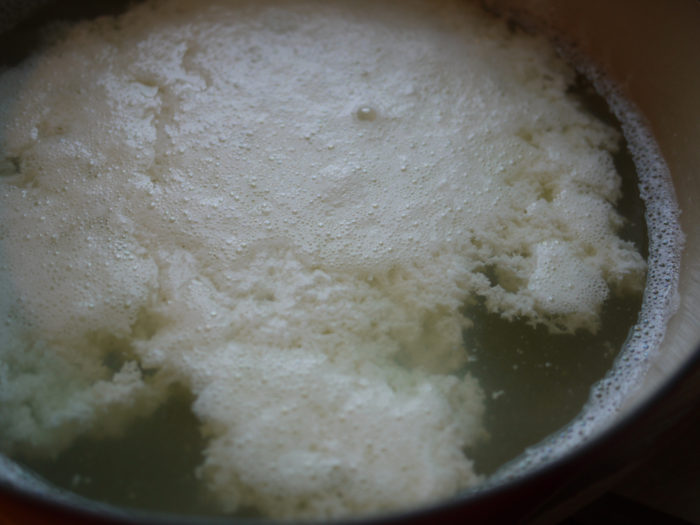If you’ve tried making cheese or Greek yogurt, you have probably dumped several cups of whey down the sink. If this describes you, then you probably didn’t know that whey is extremely versatile and can be used in cooking, baking and even garden projects.

What is whey?
It is the liquid and protein that is removed from milk during the cheese making process. For more information, you can read the following post:
What can you do with whey?
So, you just made cheese and you have several cups of this stuff... What are you going to do with it? Your first instinct might be to throw it away, but think again. Whey has a ton of great uses:
COOKING:
Whey is basically flavored water, so you can use it in most places you would have to pour out several cups of plain old water. Consider using whey to boil potatoes, prepare pastas, rice, oatmeal, and quinoa.
You can also use whey as a basis for marinades and creating stocks for soups and stews, soaking grains, and rehydrating beans.
Great for pickling and brines. In fact, many people use whey in the lacto-fermentation of vegetables and fruits— think kimchi and sauerkraut.
BAKING:

Sour whey is a great substitute for water in baked goods, like bread, bagels and pizza. In the image to the right, you can see the treats I made using whey dough.
According to one blog post from Salad in a Jar, sweet whey can be often substituted for buttermilk in many recipes, particularly battered fried chicken, biscuits, and pancakes.
BEVERAGES:
Use sweet whey to add protein to fruit and vegetable smoothies.
Another popular treat you can drink on a hot summer day is whey lemonade. The directions are pretty simple, you end up with something like probiotic sweet tea.
CHEESEMAKING:
Believe it or not, whey is a great resource in cheesemaking.
Ricotta is a cheese that is traditionally made with whey. The Ricotta cheese recipe instructs that you boil the whey to around 200 degrees fahrenheit and let it cool overnight, it will have broken down even more yielding Ricotta cheese.
When you make mozzarella, there is a point when you need to stretch the curds. Instead of throwing out the whey, use it instead of hot water to melt, and reform the mozzarella into balls.
Additionally, whey is great for prolonging the shelf life of fresh cheeses. Use it to fill containers of feta cheese to keep the cheese moist and fresh.
What else?
Although I haven't verified all of these uses, apparently whey is great for your hair and can be used to make a whey hair treatment.
Not only can you eat whey, but so can your plants and animals. Because of the acidity of sour whey it is Portland that you use only sweet whey in the case of animals, and be careful when determining which plants need higher or lower pH to thrive. Sour whey can harm the stomach of animals and discourage growth in certain plants.
According to FARMcurious, you can use whey in your garden as a mildew repellent. The acidity will change the pH of the leaves and discourage powdery mildew from growing on your cucumber, pea and squash leaves. Additionally, you can use whey to make the ground soil more acidic to encourage healthier blueberry and tomato plants.
When you run out of ideas
You can store whey in the fridge for up to a few days if you foresee yourself using it later in the week; but, for longer storage, you can freeze it. Generally speaking, it’s a huge “no no” to freeze dairy products because doing so, alters the structure of the fat globules in milk; however, seeing as it is mostly just water and protein, it usually freezes pretty well. All you need to do is pour the liquid into a freezer safe container (something that breathes and expands). You can also use a zipper bag, if that is more accessible.
What do you with your whey? Let me know in the comments below.